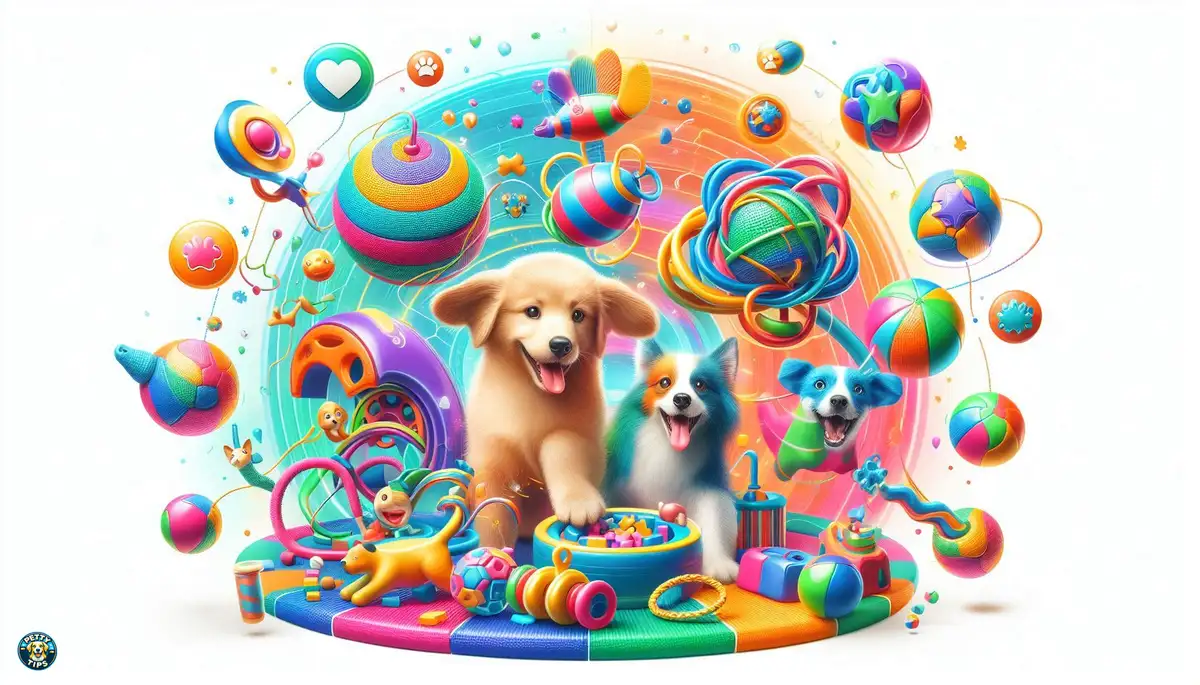
Essential First Aid Kit Items for Pets
Arianna Sperry - Sep 17, 2024 - 6 min read


interactive toys are not just fun and games; they play a crucial role in enhancing your pet's physical fitness. Whether it's a game of fetch or a toy that encourages them to chase and pounce, these toys get your furry friend moving and active. This physical activity is essential for maintaining a healthy weight, improving cardiovascular health, and keeping muscles toned. Moreover, it prevents obesity and its associated health issues, which are becoming increasingly common among pets.
Beyond physical fitness, interactive toys also provide mental stimulation for your pet. Many of these toys are designed to challenge their problem-solving skills, memory, and cognitive abilities. For example, puzzle toys that require your pet to figure out how to access a treat or a hidden toy can keep their mind engaged and prevent boredom. Mental stimulation is vital for preventing behavioral issues like excessive barking, chewing, or digging, which often arise from boredom or lack of mental stimulation.
Interactive toys offer an excellent opportunity for bonding between you and your pet. When you engage in playtime with interactive toys, you're not only providing physical and mental stimulation but also strengthening your bond through shared experiences. Your pet learns to trust and rely on you for fun and enrichment, which can deepen your relationship. Additionally, interactive play can be a source of joy and relaxation for both you and your furry companion, helping to reduce stress and promote overall well-being.
Some interactive toys are designed for group play, which can encourage socialization in pets. Whether it's a game of tug-of-war with another dog or a puzzle toy that multiple pets can work on together, these interactions mimic natural social behaviors and help your pet develop important social skills. Socialization is especially crucial for puppies and young dogs, as it teaches them how to communicate, cooperate, and behave appropriately around other animals.
When selecting interactive toys for your pet, it's essential to consider their size, breed, and individual preferences. For example, a small breed dog may prefer toys that are easy to carry and chew, while a larger breed may require more durable toys that can withstand their strong jaws. Similarly, certain breeds may have specific instincts or preferences that influence the type of toys they enjoy. By understanding your pet's unique needs and preferences, you can choose toys that are both safe and engaging for them.
Safety should always be a top priority when choosing interactive toys for your pet. Look for toys that are made from non-toxic materials and are free from small parts or choking hazards. Additionally, consider the durability of the toy, especially if your pet is a strong chewer or tends to play rough. Investing in high-quality, durable toys may cost more upfront but can save you money in the long run by avoiding frequent replacements and potential vet bills from toy-related injuries.
Just like humans, pets can get bored with the same toys day after day. To keep playtime exciting and engaging, it's essential to provide a variety of interactive toys and rotate them regularly. This prevents your pet from becoming bored or disinterested and encourages them to stay active and stimulated. Consider introducing new toys with different textures, sounds, and functions to keep your pet engaged and entertained.
Interactive toys can also be used as valuable tools for training and enrichment. Many interactive toys can be incorporated into training sessions to reinforce positive behaviors or teach new commands. For example, you can use a treat-dispensing toy to reward your pet for completing a task or solving a puzzle. Additionally, interactive toys can provide mental enrichment by offering your pet opportunities to problem-solve, explore, and engage their senses in a controlled environment.
Consistency is key when it comes to reaping the benefits of interactive toys for your pet's fitness and well-being. Establishing a regular play routine ensures that your pet gets the physical and mental stimulation they need to thrive. Aim for at least 30 minutes of interactive playtime each day, broken up into multiple sessions throughout the day. This not only helps your pet burn off excess energy but also prevents boredom and promotes a healthy lifestyle.
While interactive toys can provide hours of fun and entertainment for your pet, it's essential to supervise playtime to ensure their safety. Monitor your pet's interactions with toys to prevent accidents or injuries, especially if they are playing with toys that contain small parts or are designed for heavy chewing. Additionally, be mindful of any signs of fatigue or overexertion and take breaks as needed to prevent exhaustion or injury.
As mentioned earlier, rotating toys regularly is essential for keeping playtime exciting and engaging for your pet. However, it's also beneficial for maintaining their interest and preventing boredom. Try introducing a new toy or two every week and removing toys that your pet has lost interest in or that have become damaged or worn out. This keeps your pet stimulated and prevents them from becoming too attached to any one toy.
In addition to dedicated play sessions, look for opportunities to incorporate interactive play into your pet's daily activities. For example, you can use interactive toys to make mealtime more engaging by feeding your pet their meals in puzzle toys or using treat-dispensing toys as rewards during training sessions. This not only provides mental stimulation but also helps to reinforce positive behaviors and strengthen the bond between you and your pet.